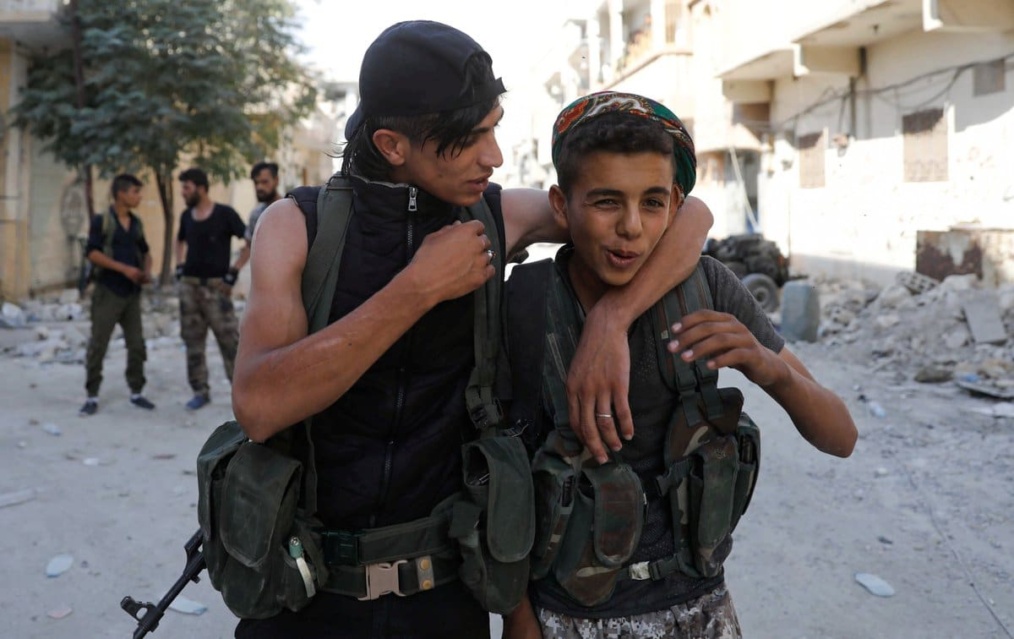
An Overview of Child Terrorism in Syria
One crisis plaguing Syria is the issue and threat of child terrorism. Child terrorism is a reality many Syrian children must face by being born into a war-torn country. No human being is safe, no future is guaranteed, no child can live unscathed. Measures and organized efforts are flourishing and need to be supported and expanded internationally to address and combat child terrorism.
Child Terrorism and Children’s Rights
Terrorist groups are doing their best to teach children that America’s war on terrorism is an act of aggression. Children are particularly vulnerable to military conscription because they are easily manipulated and subjected to violence.
The Syrian Human Rights Network (SNHR) released its 10th annual report on the violation of the rights against Syrian children. According to a report, at least 29,661 children have been killed in Syria, and 5,036 children have been arrested or disappeared.
The Action Plan
U.S. relations with Syria began in 1944 and have since resulted in a long road of support and diplomatic correspondence. Syria has been included on the U.S. list of state sponsors of terrorism since its creation in 1979 due to its continued support of terrorism and terrorist groups, and its pursuit of weapons, missile programs and weapons of mass destruction. Moreover, Syria has continued its efforts to use and develop chemical weapons. Finally, Syria has continuously attempted to undermine U.S. and international efforts to stabilize Iraq and Syria.
Syria is exposed to legal sanctions, including export sanctions under the Syrian Liability Law, and are not eligible to support the U.S. or purchase U.S. military equipment. Following the outbreak of conflict in Syria in March 2011, a follow-up decree was issued against continued violence and human rights violations in Syria.
The Syrian Democratic Forces (SDF) signed an Action Plan with the United Nations to prevent the recruitment or use of children under the age of 18. Through the Action Plan, “the SDF commits to end and prevent the recruitment and use of children, identify and separate boys and girls currently within its ranks, and put in place preventative, protection and disciplinary measures related to child recruitment.”
Ultimately, the United Nations dedicates an office to gathering information and reports on how and where children are affected by armed conflict. Additionally, the United Nations has identified six severe violations against children which include, “the recruitment and use of children; the killing and maiming of children; rape and other forms of sexual violence; abduction of children; attack on schools and hospitals; and the denial of humanitarian access.”
The New Child Rights Law
On August 15, 2021 Syrian President Bashar al-Assad introduced a new law, known as Law No. 21, which prohibits the trafficking of children, including child soldiers in Syria. Many organizations recruit children, including the Syrian government.
While the law appears to be an important step in the right direction, many groups, such as the Syrian Center for Accountability and Justice, are skeptical of the law’s actual ability to end the use of child soldiers by militants.
This new law was a crucial win for Syrian children that have been used as a tool and helping them avoid such dark and traumatizing experiences.
Outcomes
An urgent need for an effective solution to the root of the problem of child soldiers must be found. UNICEF is helping approximately 8,700 children released from military service around the world. These rehabilitation and poverty alleviation efforts enable the proper healing of trauma. UNICEF also provides special support to Syrian children through health care, education, and improved living conditions.
Overall, the Action Plan between Syria and the United Nations, as well as the new legislation for the prohibition of child trafficking are a few organized steps that will hopefully make a difference. A global effort is needed to establish peace in a war-torn country that has suffered a myriad of wounds for many years, and ultimately stop its use of child soldiers.
Katerina Rebecca Paraskeva, Counter-Terrorism Research Fellow
